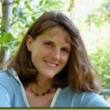The big book of bugs
Description
More Details
Table of Contents
From the Book
Similar Titles From NoveList
Similar Authors From NoveList
Published Reviews
Booklist Review
*Starred Review* The title for this book is quite appropriate, considering that its oversize format is crawling with information on more than 25 types of bugs. The two introductory sections offer information for bug spotters and show a bug family tree, which differentiates between insects, spiders, centipedes and millipedes, slugs and snails, and worms. Individual bug groups (ants, dragonflies, bees, praying mantis, etc.) are shown on beautifully illustrated double-paged spreads buzzing with activity and awash with watercolor hues. Each spread includes four to five facts and a Can You Find . . . question that encourages readers to look closely at the pictures and identify a particular bug in the scene. For example, the beetles' spread shows the larvae in a hollow tree, a variety of beetles scurrying and flying, and a challenge for the reader to spot a pair of dung beetles rolling poo. The last third of the book takes a broader look at these critters, including how they move, why some love living in houses, and how readers can create a bug-friendly garden. Answers to the Can You Find . . . questions follow, along with scientific vocabulary. Zommer's (One Hundred Bones, 2016) detailed illustrations and the seek-and-find feature will keep young readers enrapt, as they absorb entomological basics from the approachable, fact-rich text. An eye-catching and engaging introduction to bugs.--Petty, J. B. Copyright 2016 Booklist
Publisher's Weekly Review
Bugs of many varieties-including some that are a stretch to call bugs-pepper the pages of this guidebook, which poses playful questions ("Does a dragonfly breathe fire?") that serve as lead-ins to more than 20 topics. Most spreads are devoted to specific creatures (beetles, ladybugs, termites); later pages explore how bugs grow, where they can be found, and some of the ecological roles they play. Airy digital illustrations with a collage-like feel lightly personify the bugs-earthworms have red smiles, and most of the bugs are, well, bug-eyed. Seek-and-find prompts invite eagle-eyed readers to identify bugs either by appearance or behavior ("Can you find... a spider hoping to catch a tasty meal?"). It's a handsome introduction to tiny, oft-overlooked creatures, though the inclusion of worms, spiders, and even snails make the title something of a misnomer. Ages 4-up. (Apr.) © Copyright PWxyz, LLC. All rights reserved.
School Library Journal Review
Gr 2-4-Whimsically illustrated bugs with big eyes crawl, fly, dig, and swoop across the pages in great detail. The endpapers feature departing bees, and the title page challenges readers to find a blue fly 15 times. Beginning with a simple definition of what makes a bug a bug ("a particular kind of insect with sharp mouthparts to stab and suck up food"), the work goes on to use bold heading questions to introduce a relevant concept or quality (the question "Are all bugs the same?" prompts a look at the physical characteristics of snails, spiders, centipedes and millipedes, and worms). In most sections, kids are asked to spot a certain bug-encouraging them to develop their concentration skills. A "Did You Find" section provides the answers to the previous searches. There is a "Bug Words" page that defines specific terms in short sentences (for instance, "A bug smells and feels with feelers called antennae"). It should be taken into consideration that the book has a large trim size, which might make shelving difficult. VERDICT Reminiscent of Scholastic's "I Spy" series, this is an interactive book that will engage and entertain readers while they learn a few basic bug facts.-Tamara Saarinen, Pierce County Library, WA © Copyright 2016. Library Journals LLC, a wholly owned subsidiary of Media Source, Inc. No redistribution permitted.
Booklist Reviews
*Starred Review* The title for this book is quite appropriate, considering that its oversize format is crawling with information on more than 25 types of bugs. The two introductory sections offer information for bug spotters and show a bug family tree, which differentiates between insects, spiders, centipedes and millipedes, slugs and snails, and worms. Individual bug groups (ants, dragonflies, bees, praying mantis, etc.) are shown on beautifully illustrated double-paged spreads buzzing with activity and awash with watercolor hues. Each spread includes four to five facts and a "Can You Find . . ." question that encourages readers to look closely at the pictures and identify a particular bug in the scene. For example, the beetles' spread shows the larvae in a hollow tree, a variety of beetles scurrying and flying, and a challenge for the reader to spot a pair of dung beetles rolling poo. The last third of the book takes a broader look at these critters, including how they move, why some love living in houses, and how readers can create a bug-friendly garden. Answers to the "Can You Find . . ." questions follow, along with scientific vocabulary. Zommer's (One Hundred Bones, 2016) detailed illustrations and the seek-and-find feature will keep young readers enrapt, as they absorb entomological basics from the approachable, fact-rich text. An eye-catching and engaging introduction to bugs. Copyright 2014 Booklist Reviews.
Publishers Weekly Reviews
Bugs of many varieties—including some that are a stretch to call bugs—pepper the pages of this guidebook, which poses playful questions ("Does a dragonfly breathe fire?") that serve as lead-ins to more than 20 topics. Most spreads are devoted to specific creatures (beetles, ladybugs, termites); later pages explore how bugs grow, where they can be found, and some of the ecological roles they play. Airy digital illustrations with a collage-like feel lightly personify the bugs—earthworms have red smiles, and most of the bugs are, well, bug-eyed. Seek-and-find prompts invite eagle-eyed readers to identify bugs either by appearance or behavior ("Can you find... a spider hoping to catch a tasty meal?"). It's a handsome introduction to tiny, oft-overlooked creatures, though the inclusion of worms, spiders, and even snails make the title something of a misnomer. Ages 4–up. (Apr.)
[Page ]. Copyright 2016 PWxyz LLCSchool Library Journal Reviews
Gr 2–4—Whimsically illustrated bugs with big eyes crawl, fly, dig, and swoop across the pages in great detail. The endpapers feature departing bees, and the title page challenges readers to find a blue fly 15 times. Beginning with a simple definition of what makes a bug a bug ("a particular kind of insect with sharp mouthparts to stab and suck up food"), the work goes on to use bold heading questions to introduce a relevant concept or quality (the question "Are all bugs the same?" prompts a look at the physical characteristics of snails, spiders, centipedes and millipedes, and worms). In most sections, kids are asked to spot a certain bug—encouraging them to develop their concentration skills. A "Did You Find" section provides the answers to the previous searches. There is a "Bug Words" page that defines specific terms in short sentences (for instance, "A bug smells and feels with feelers called antennae"). It should be taken into consideration that the book has a large trim size, which might make shelving difficult. VERDICT Reminiscent of Scholastic's "I Spy" series, this is an interactive book that will engage and entertain readers while they learn a few basic bug facts.—Tamara Saarinen, Pierce County Library, WA
[Page 128]. (c) Copyright 2016 Library Journals LLC, a wholly owned subsidiary of Media Source, Inc. No redistribution permitted.




































